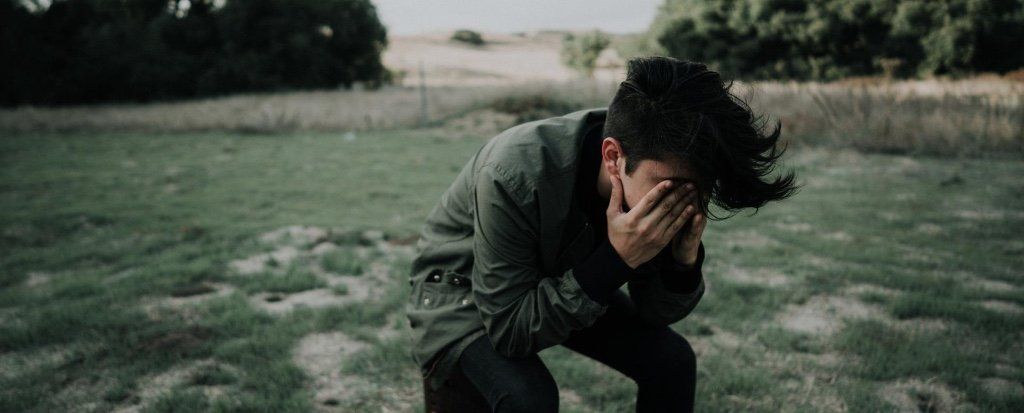Understanding Our Adolescent’s Struggles

Suicide is a traumatic reality that has touched many of us in the past year in Grande Prairie. It seems to be an epidemic that is rippling through our adolescent population causing heartache to many families, friends, and peers. Many questions are asked about what could have been done: “Why my family?” “Could I have done something different?” or “Why didn’t I notice any signs?” Many emotions can be triggered from loss such as anger, fear, guilt, and sadness. Nothing can prepare us for the devastating impact when a loved one chooses to take his or her life. Because it seems to be an ongoing community epidemic, we are left searching for answers to stop the devastation, while living in ongoing fear of who will be next. The following article will hopefully provide some information to help family and friends understand adolescent suicide, provide strategies to shield adolescents from using suicide as an option to escape their struggles, and provide strategies to strengthen family relationships.
Understanding Adolescents
Adolescence is a stage of development that can be a tumultuous time for both the adolescent and their family. It is during this time that the adolescent is trying to discover and establish their own identity, while at the same time they are very dependent on their relationship with their parents and siblings. This is a time that keeps parents on their toes, as from one day to the next they are unsure if they are interacting with a “child” or with an “adult”. It can be a very confusing time for parents as an adolescent’s needs and expectations very greatly from one moment to the next and the wrong response could set them spiraling into a battle. To add to the confusing, albeit natural, developmental process is the copious amount of literature written to provide families guidance on how to respond to their teen. It does not help that much of the literature disagrees with itself. So what is a parent to do? Especially when that parent wants to do what is right and what is best for their adolescent.
The Search for Identity
Adolescence is a stage of development marked by much interpersonal conflict. It is during this time that they are attempting to find and establish their own sense of self, which for many seems to result in ongoing battles with family, peers, and teachers. If external conflict weren’t enough, many teens often struggle internally as their own thoughts and emotions are in conflict. In an attempt to develop an autonomous self, adolescents grapple with developing their own beliefs and values and they struggle with the similarities and differences from their family’s value system. They may try on different identities and experiment with different beliefs and value systems before they settle on one that fits for them and their understanding of who they are. It is in this process that they develop a strong sense of self. It is also during this process that the parent’s role shifts, but nonetheless remains vital, to the healthy development of their son or daughter.
The Need for Independence
This stage of development is also a time where there is an increased need for independence. As youth enter this stage they start to let go of their dependency on their family so they can establish themselves as separate to their family. As with the search for identity, this can increase the internal and external battle for a teen. The need for independence strongly pits the teen against the natural drive for dependence and attachment to their parents and others of significance. It is in this internal battle that parents struggle to understand. During this time when the adolescent’s behaviour is unpredictable, and sometimes quite frustrating, if the parent can remain attuned and responsive to their child there will be many benefits for the adolescent and many benefits to the parent-child relationship. It is in the attunement (being aware of, and responsive to, a child’s emotions and needs) that a parent will be best able to identify the child’s momentary needs and therefore will be able to respond appropriately that either honors a child’s need for dependence or honors a child’s need for independence.
Parent’s Shifting Role – What Stays the Same and What Needs to Change
It is commonly thought that during this stage of development teens distance themselves from their parents and develop a closer attachment to their peers. This is not entirely true. While the importance of peers does increase during this stage, the parent’s role remains just as integral as in other stages of development. In order for individuals to successfully (and hopefully with the least amount of turmoil) make it through adolescence they require a strong and thriving connection to their parents. It is through an adolescents’ relationship with the parents that they receive consistent and predictable emotional nurturance, important for development, healthy self-esteem, healthy peer relationships, and, if need be, to soften the blow of the impact of trauma. It is important for friends to keep the role as peers and to not be a parent replacement.
What needs to shift is the way the parent is involved, not the degree that the parent is involved. Parents should continue to make sure there are plenty of opportunities for one-on-one time with their adolescent. An adolescent will be more responsive to the direction of parents if he or she believes he/she has a strong unconditional relationship with at least one parent. While it is important for adolescents to experience more responsibility and independence, a parent should also make sure there are also times the adolescent is dependent upon the parent, as this also preserves the attachment relationship.
Understanding Adolescent Suicide
When trauma occurs, such as the chain reaction of suicide and suicidal attempts amongst our most vulnerable teens, development halts until the thoughts and feelings can be organized around the event and healthy coping strategies are utilized. Adolescent development may be interrupted until the trauma has stopped and the issues surrounding the trauma are resolved. Therefore, it is extremely important for adolescents to have their attachment figures rally around them in a supportive manner and help them walk through the difficult time. However, it appears that resolution has not been possible with many adolescents in Grande Prairie. Over the past year there have been many events that have occurred that can be labelled as trauma that have significantly impacted the lives of our adolescents. One traumatic event has been compounded by another traumatic event, and by another, and so on, not leaving our teens with sufficient time to process and grieve each event. The more the traumatic events are left unresolved the more at risk our adolescents are of experiencing symptoms of distress, interpersonal problems, experiencing lower self-esteem, engaging in self-destructive behaviours (such as drugs, alcohol, self-harm, etc.), and worse, considering suicide as an option. Below is a list of events that might increase an adolescent’s risk of suicide, signs and symptoms to watch out for, strategies to safety plan with your teen, and ways to care for the family as a whole.
Circumstances That Increase Risk
If an adolescent is not strongly rooted in a healthy close relationship with parents and siblings the developmental hurdles that a teen must successfully master can be overwhelming. Adolescents need support when confronted with the loss of friends and acquaintances to suicide.
The following list is examples of circumstances that may place your adolescent at greater risk for considering suicide. Please note this list is not exhaustive, there may be other challenging circumstances that your family and/or teen has experienced which also require an immediate response.
- Past trauma (e.g. car accident, abuse, death of a loved one, bullying, etc.)
- Parental divorce/separation
- Death of a loved one
- Ongoing conflict (parent-to-parent, parent-to-teen)
- Newly blended families (e.g. step-parents and step-siblings)
- Physical, sexual, and/or emotional abuse
- Addictions in the home (e.g. drugs, alcohol, pornography, etc.)
- Exposure to domestic violence
- Substance abuse (parent or adolescent)
- Break-up from boyfriend/girlfriend
- Suicide (including attempted suicide) of a family member, friend, or peer
One of these situations may place a youth at risk, but if an adolescent experiences compounding issues this significantly increase his or her risk of suicide. However, the more of these challenges an adolescent experiences the more at risk they are of suicide. Additionally, if parents (and other significant adults to the adolescent) are not sufficiently responsive to the adolescent’s distress signals this may also increase the possibility of suicidal ideation or, potentially increase negative coping strategies such as use of drugs and alcohol.
Signs and Symptoms of Concern
Each adolescent will be affected by life’s challenges to varying degrees. Individual responses and resilience factors related to coping will depend on such things as the health of the adolescent’s relationship to his/her parents, personality style, and his/her perceived control in each situation. While it is necessary to stay in communication with your teen there are behavioural changes to be aware of that could indicate your teen may not be directly expressing their concerns to you. It is important to know what is typical for your teen as some young people appear depressed and isolate themselves, while others will attempt to repress and hide their struggle which is expressed through an increase in energy and hyperactivity. Signs to watch out for include:
- Isolation and withdrawal from family and friends
- Loss of interest/dropping out of previously enjoyed activities
- Changes in grades at school (increase or decrease) and/or an inability to concentrate on schoolwork
- Changes in eating patterns (increase or decrease), note any significant changes in weight gain or loss
- Changes in sleeping patterns (too much, too little, or inability to sleep alone)
- Increase or decrease in energy
- Drug and alcohol use
- Cutting
- Loss of interest in personal appearance
- Regression, rebellion, running away
- Low self-esteem and self-deprecating comments (including inability to accept praise or rewards from others)
- Complaints of headaches, fatigue, stomach-aches (including missing school because of physical complaints)
Many parents hope that when their adolescent expresses suicidal thoughts that it is either a phase or an attempt to manipulate the parents into something. Any expression of suicidal thoughts or plans must be taken seriously by a parent. Even if the adolescent is not serious about following through on his or her expression of suicide, it is a loud and clear expression for help (and attention) and some course of action must be taken by the parent(s). When an individual comes to the point of contemplating suicide and/or are voicing the possibility of suicide he or she is quite troubled and therefore requires support from both family and professionals to organize thoughts and feelings and develop healthier coping strategies. When a child/adolescent reacts to this degree their basic decision-making and problem- solving abilities have been hijacked. They are unable to find appropriate coping strategies on their own. Until the young person is able to process the event and underlying feelings, their normal developmental process may be considerably interrupted.
Safety Planning With Your Teen
So what should a parent do if they are worried that their adolescent is at risk of harming him or herself? First and foremost, it is paramount that the family does not ignore the warning signs that may indicate the adolescent is at risk, this could increase the chances of them harming themselves. It is important to immediately seek out professional help, whether through the school or through the community to provide support to both the adolescent and the family. If it is not possible to make an appointment in a reasonable amount of time, or if the teen is in crisis, the parent can bring the adolescent into the emergency unit at the hospital. Open communication between a parent and the adolescent is also essential, this includes listening to their ups and downs and helping to clarify emotions they may have from significant events that happened to them throughout the day. Communication also includes asking about self-harm and suicidal ideation. Finally, developing a safety plan (something the family’s counselor could help them develop) will provide the adolescent and family with direction when times of crisis do arise. Information to include in the safety plan is:
Alternate activities to do when thoughts of suicide arise: relaxation strategies, physical activities, people to spend time with
Names and phone numbers of at least 3 people to contact when individual is feeling unsafe
List of safe (public) places to go
Emergency numbers: 911, emergency room, police, counselor, etc.
Non-harming contract
Conclusion: The Power of Attachment
An important message that teens need to hear all the time, but is important now more than ever, is that they are valued, accepted, and cared for by their parents and any other significant attachment figure in their lives. This message is important no matter how the teen is feeling or behaving, and no matter what is going on in their life. A positive parent-child relationship shields adolescents from the impact of negative life events, allowing the adolescent to better cope with the distress caused by the event. If a parent feels their adolescent is at risk of self-harm or suicide there are two things he or she can do: 1) Seek out professional help and 2). Facilitate a closer relationship with their teen.
References
Berghaus., B. J. (2011). A new look at attachment theory and adult “attachment” behavior.
Behaviorology Today, 14(2), 3-10.
Harter, S. (2012). The construction of self: developmental and sociocultural foundations (2nd ed.). New York: The Guilford Press.
Lessard, J.C. & Moretti, M. M. (1998). Suicidal ideation in an adolescent clinical sample: attachment patterns and clinical implications. Journal of Adolescence,21, 383-395.
Neufeld, G., Ph.D. (Speaker) (2003). Making Sense of Adolescence (DVD Study Course). Burnaby,
BC: Gordon Neufeld.
Parrott III, L. (2000). Suicide. In Helping the Struggling Adolescent: A guide to thirty-six common problems for counselors, pastors, and youth workers (pp. 430-439). Grand Rapids, Michigan.
© Coyright Sabrina Ragan M.Sc, CCC, CPT, RPsych





